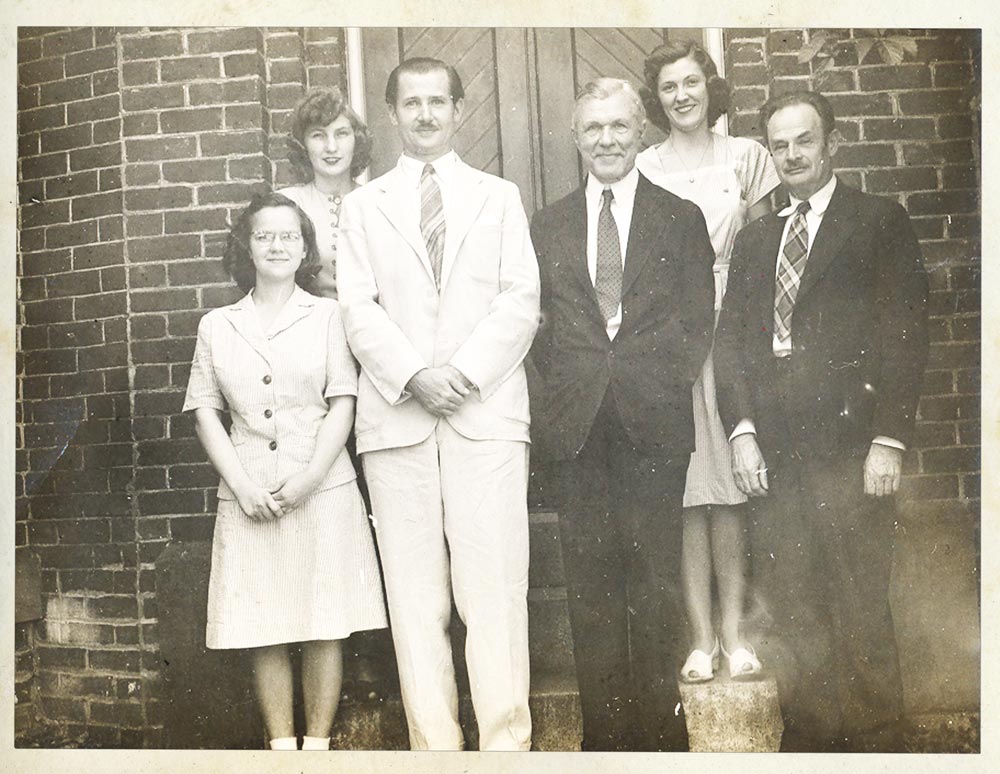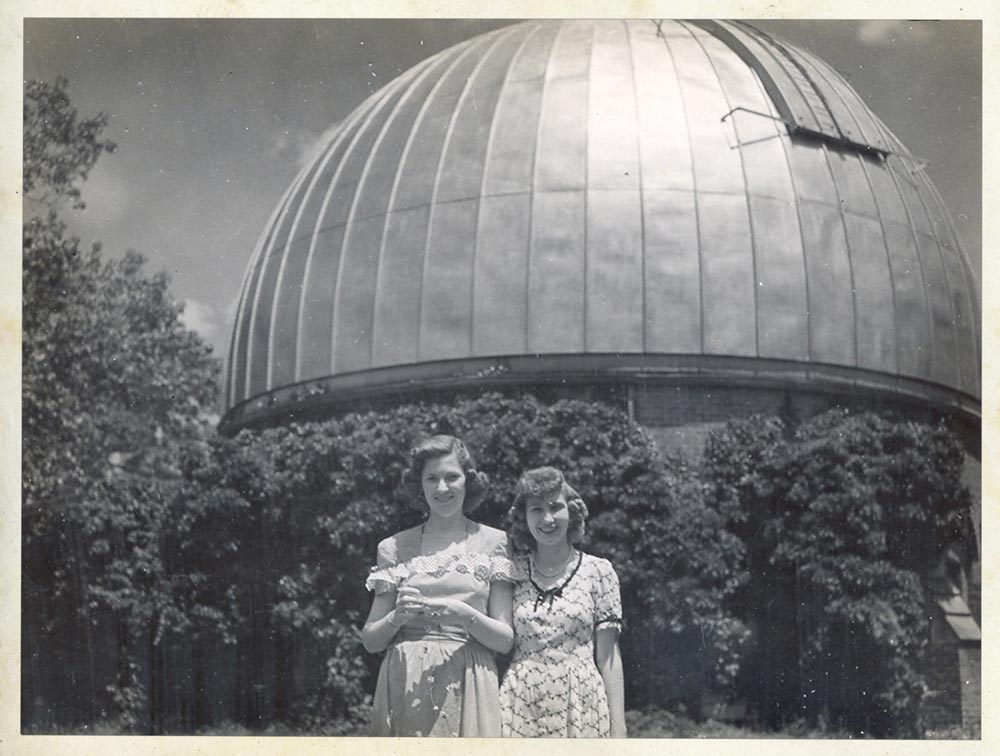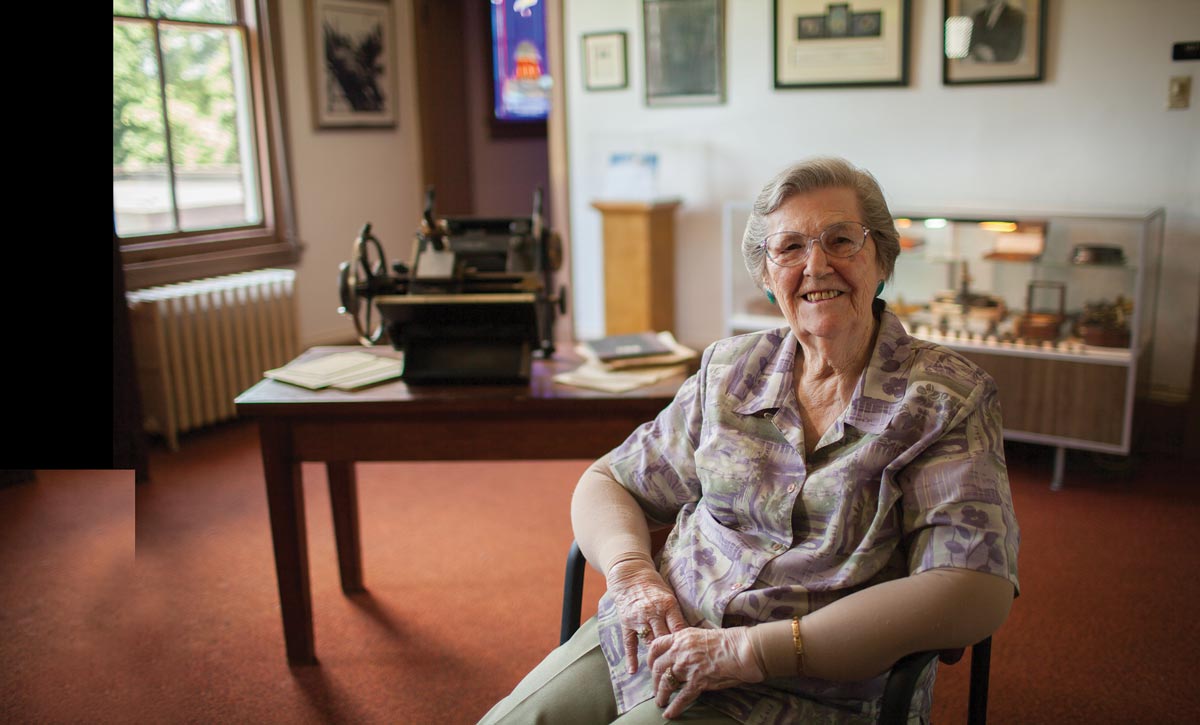Human Computer
As a teenager, Caroyl Beddow Gooch measured the stars on Mount Jefferson
In 1942, at the age of 18, Caroyl Beddow Gooch began a job at UVA’s Leander McCormick Observatory, working alongside Observatory director Samuel Alfred Mitchell and several other internationally known astronomers. Gooch was one of the dozens of workers in the years from 1914 through the 1970s who calculated thousands of astronomical measurements by hand, before technology made their jobs unnecessary. Most of these workers were young women, and the astronomers referred to them as “computers.”
At 91, Gooch is the only person left from the 1940s Observatory staff. She describes her years at the Observatory as some of the best in her life. “The machines we used and the things I calculated have mostly left my head now, but I remember the people clearly,” Gooch says. “Dr. Mitchell was a dear, sweet man. And when Dr. [Rupert] Wildt [a German astronomer] first came to work here, he clicked his heels and bowed to me.”

The computers’ careful calculations helped McCormick Observatory become one of the top observatories in the world when it came to determining the distances between Earth and thousands of stars, until the launch of the Hipparcos satellite in 1989.
Mitchell was an international leader in studying stellar parallax—the relative motion of nearby stars against a backdrop of distant celestial objects. As the Earth orbits the Sun, nearby stars seem to shift, moving back and forth against a backdrop of distant celestial objects that appear stationary. Measuring those “shifts” allowed astronomers to determine distance between the Earth and those nearby stars.
Astronomers used the 26-inch lens of the Observatory’s telescope to gather the light from these faint stars. They then captured that starlight on glass photographic plates, and developed the images. Gooch and other computers examined those plates to measure stellar parallax.
In order to find the exact position of a star on a glass plate, the computers used astrometric machines such as the Gaertner Single Screw Measuring Engine, which carefully shifted plates until the star being measured was perfectly centered so that its position could then be recorded. The computers would use a blink comparator to compare plates of the same star taken months apart. Through the eyepiece of the machine, the computer could identify changes in the star’s position.
To ensure precision, each star’s position would be measured three times, often by different computers, and the results would be averaged.

Between 1914 and 1995, UVA astronomers took 144,000 plates of the sky, and because of their expense, most of the plates were rotated and used multiple times. Not only did computers need to be precise in their measurements, they also had to navigate plates with different star images at various angles.
Today, the plates are stored in the Observatory vault, alongside cabinets of observing logs, each filled with thousands of astronomical measurements painstakingly written in fountain pen by Gooch and other computers.
In addition to taking astronomical measurements, she performed administrative tasks for Mitchell; Russian astronomer Alexander Vyssotsky; Wildt, who researched planets’ atmospheres; and Emma T. R. Williams, the University’s only female astronomer at the time, who studied the kinematics of the Milky Way.
Gooch says she felt respected by her coworkers and supported in particular by Williams. “Emma was more hands-on than the fellas,” she says. Williams taught the computers how to use the Observatory’s various astrometric machines.
But some outside the Observatory didn’t realize the level of scientific knowledge the computers had. Gooch recalls that at the astronomy department’s annual banquet dinner a professor’s wife said to her, “You certainly do carry on conversation well for a town girl.” She laughs so hard as she tells the story that she wipes away tears. “It became a family joke. Anytime I accomplished anything, my mother would say, ‘You do that so well for a town girl.’”
Gooch grew up on Locust Avenue in Charlottesville and graduated from Lane High School at the age of 15. She enjoyed the financial independence that working life gave her in the last years of the Great Depression. “I was rolling in money—I made $40 a month!” she says. “I bought a three-piece corduroy suit for $9.98.”

She worked at the Observatory from 1942 through 1945 and then moved on to what she says was her true calling—accounting. Remarkably, she brushes off the idea that the work she did as a computer required high intelligence. “If there was any intelligence, I missed it,” she jokes. And yet, when reminded of an observation she made in her work that led to Mitchell’s identification of a star with an unusual proper motion, her eyes twinkle. “I suppose I did help discover that,” she says.
“People looked at me kind of strangely when they asked what I did,” she adds, smiling. “I’d look them in the eyes and say, ‘I measure the stars.’”